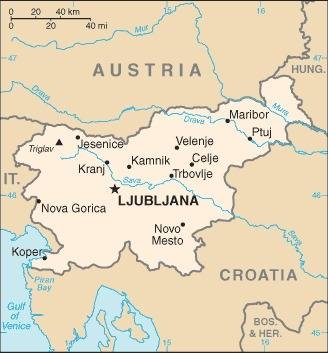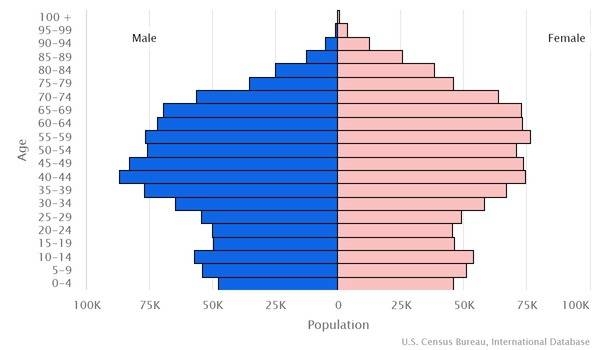Country Summary




Introduction
Background
In 1918, the Slovenes joined the Serbs and Croats in forming a new multinational state, which was named Yugoslavia in 1929. After World War II, Slovenia was one of the communist republics in the restored Yugoslavia. Slovenes succeeded in establishing their independence in 1991.
Geography
Area
total: 20,273 sq km
land: 20,151 sq km
water: 122 sq km
Climate
Mediterranean climate on the coast, continental climate with mild to hot summers and cold winters in the plateaus and valleys to the east
Natural resources
lignite, lead, zinc, building stone, hydropower, forests
People and Society
Population
2,101,208 (2022 est.)
Ethnic groups
Slovene 83.1%, Serb 2%, Croat 1.8%, Bosniak 1.1%, other or unspecified 12% (2002 est.)
Languages
Slovene (official) 87.7%, Croatian 2.8%, Serbo-Croatian 1.8%, Bosnian 1.6%, Serbian 1.6%, Hungarian 0.4% (official, only in municipalities where Hungarian national communities reside), Italian 0.2% (official, only in municipalities where Italian national communities reside), other or unspecified 3.9% (2002 est.)
Religions
Catholic 57.8%, Muslim 2.4%, Orthodox 2.3%, other Christian 1%, unaffiliated 3.5%, no response or unspecified 22.8%, none 10.1% (2002 est.)
Population growth rate
-0.06% (2022 est.)
Government
Government type
parliamentary republic
Capital
name: Ljubljana
Executive branch
chief of state: President Borut PAHOR (since 22 December 2012)
head of government: Prime Minister Robert GOLOB (since 25 May 2022)
Legislative branch
description: bicameral Parliament consists of:
National Council (State Council)or Drzavni Svet (40 seats; members indirectly elected by an electoral college to serve 5-year terms); note - the Council is primarily an advisory body with limited legislative powers
National Assembly or Drzavni Zbor (90 seats; 88 members directly elected in single-seat constituencies by proportional representation vote and 2 directly elected in special constituencies for Italian and Hungarian minorities by simple majority vote; members serve 4-year terms)
Economy
Economic overview
high-income, fast-growing EU-member economy; high human capital; key health infrastructure investments; high government spending; key Croatian investments; high-technology and manufacturing sectors; growing financial hub
Real GDP (purchasing power parity)
$76.75 billion (2020 est.)
Real GDP per capita
$36,500 (2020 est.)
Agricultural products
milk, maize, wheat, grapes, barley, potatoes, poultry, apples, beef, pork
Industries
ferrous metallurgy and aluminum products, lead and zinc smelting; electronics (including military electronics), trucks, automobiles, electric power equipment, wood products, textiles, chemicals, machine tools
Exports
$41.73 billion (2020 est.)
Exports - partners
Germany 18%, Italy 11%, Croatia 8%, Austria 7%, France 5%, Switzerland 5% (2019)
Exports - commodities
packaged medicines, cars and vehicle parts, refined petroleum, electrical lighting/signaling equipment, electricity (2019)
Imports
$36.6 billion (2020 est.)
Imports - partners
Germany 14%, Italy 12%, Austria 8%, Switzerland 8%, China 7% (2019)
Imports - commodities
packaged medicines, cars and vehicle parts, refined petroleum, delivery trucks, electricity (2019)
Exchange rates
euros (EUR) per US dollar -
Page last updated: Tuesday, August 16, 2022
